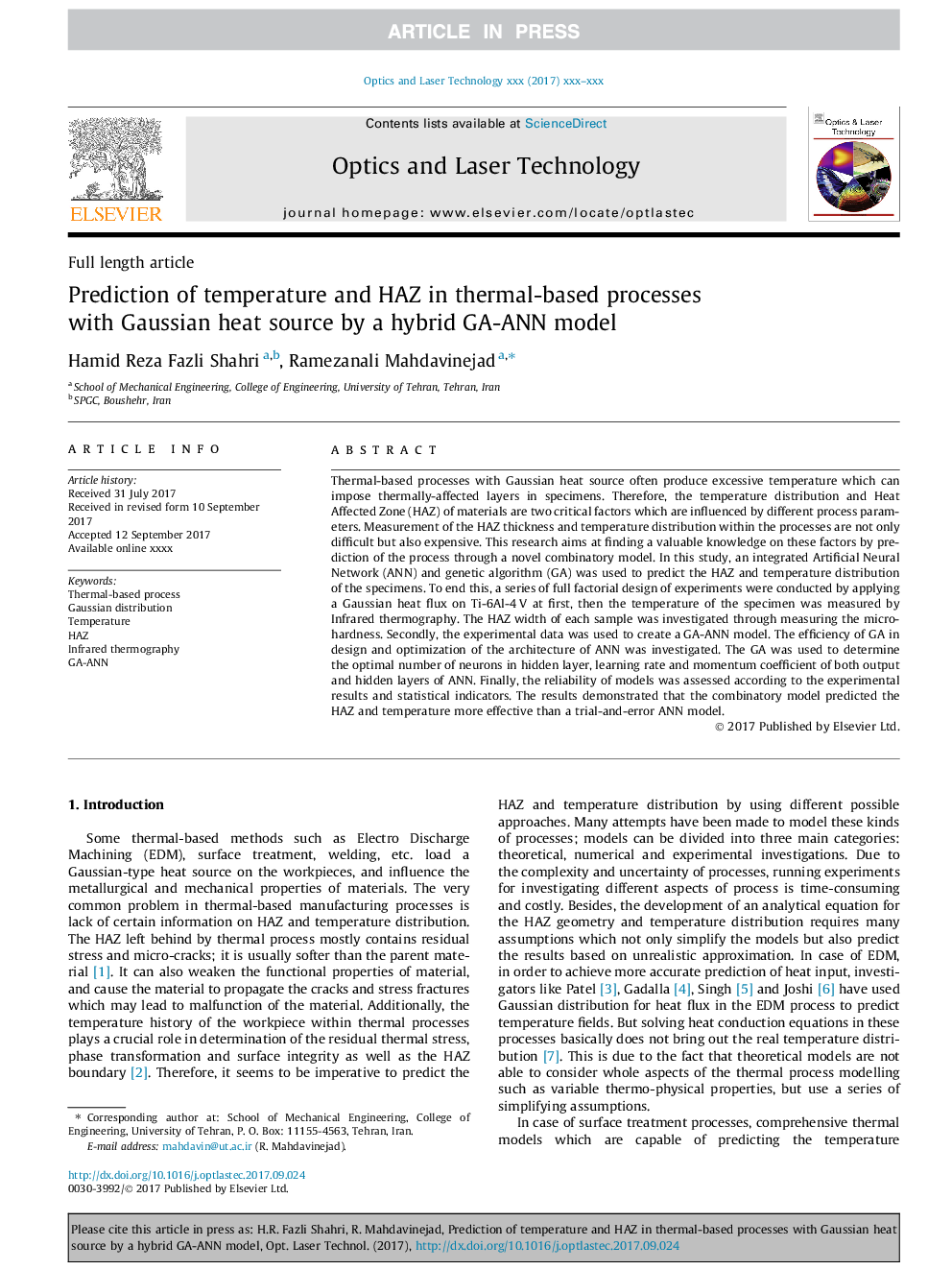| Article ID | Journal | Published Year | Pages | File Type |
|---|---|---|---|---|
| 5007317 | Optics & Laser Technology | 2018 | 11 Pages |
Abstract
Thermal-based processes with Gaussian heat source often produce excessive temperature which can impose thermally-affected layers in specimens. Therefore, the temperature distribution and Heat Affected Zone (HAZ) of materials are two critical factors which are influenced by different process parameters. Measurement of the HAZ thickness and temperature distribution within the processes are not only difficult but also expensive. This research aims at finding a valuable knowledge on these factors by prediction of the process through a novel combinatory model. In this study, an integrated Artificial Neural Network (ANN) and genetic algorithm (GA) was used to predict the HAZ and temperature distribution of the specimens. To end this, a series of full factorial design of experiments were conducted by applying a Gaussian heat flux on Ti-6Al-4 V at first, then the temperature of the specimen was measured by Infrared thermography. The HAZ width of each sample was investigated through measuring the microhardness. Secondly, the experimental data was used to create a GA-ANN model. The efficiency of GA in design and optimization of the architecture of ANN was investigated. The GA was used to determine the optimal number of neurons in hidden layer, learning rate and momentum coefficient of both output and hidden layers of ANN. Finally, the reliability of models was assessed according to the experimental results and statistical indicators. The results demonstrated that the combinatory model predicted the HAZ and temperature more effective than a trial-and-error ANN model.
Related Topics
Physical Sciences and Engineering
Engineering
Electrical and Electronic Engineering
Authors
Hamid Reza Fazli Shahri, Ramezanali Mahdavinejad,
